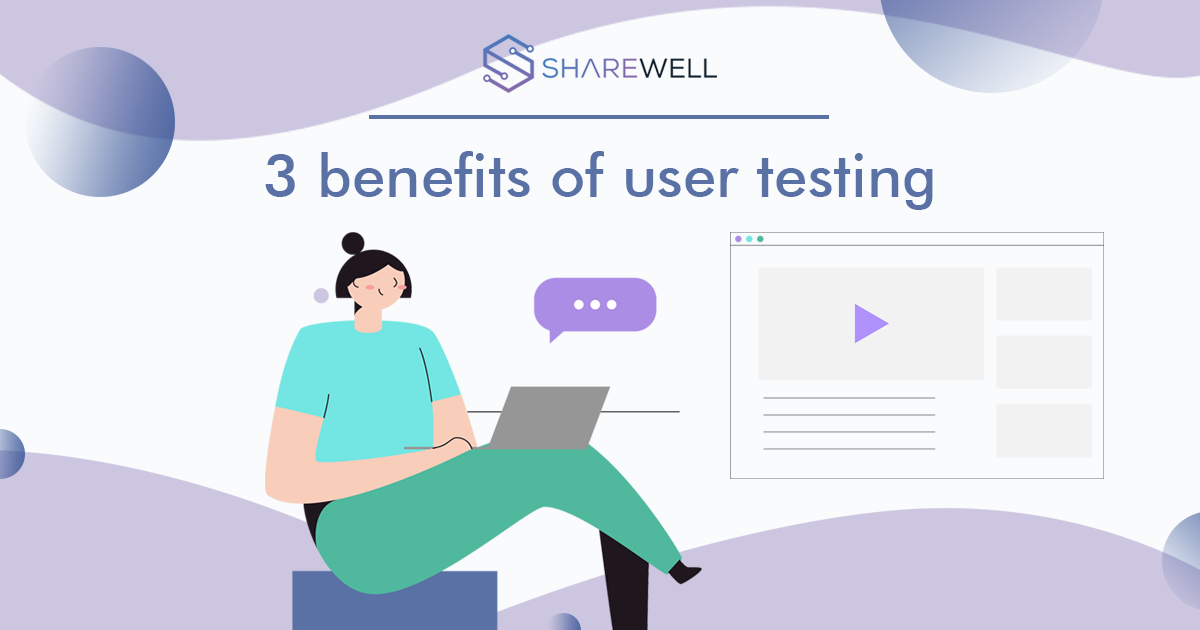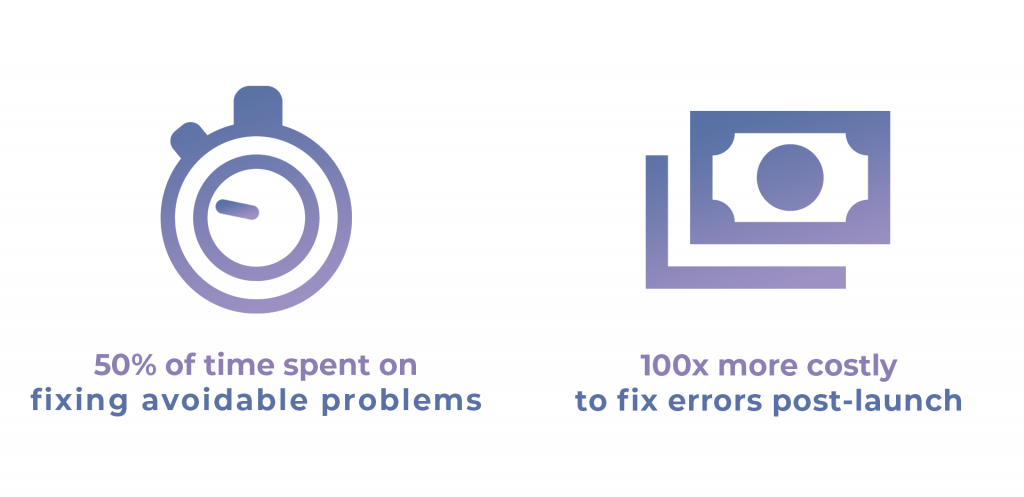3 benefits of user testing for your business

The benefits of user testing come in different shapes and sizes, as a successful user test can help you create better solutions for everyday problems. And solutions need different user testing metrics.
Designing and developing a new product also requires someone to challenge and break those creations, as it leads to discovery on how to make changes for the better. These improvements are key to providing a better product for users, whether it’s for attracting or maintaining customers.
There are many advantages when it comes to gathering feedback from users. Let’s take a look at how you can better your product and results through user testing:
What is user testing?
Essentially, user testing is asking real-world customers to complete tasks surrounding the usage of your product, its functions, features, and interface. This process assists you in knowing whether your product has any flaws or errors that might hinder the success of your design.
The process of gathering feedback from users involves many different moving parts:
- Outlining the goal of your test – what do you want to achieve;
- Setting up the test – which tasks participants have to complete;
- Finding the suitable test users – who are the real users of your product or feature;
- Analyzing the results – what can you do to improve your product.
Understanding users will help you along the way and keep you from working in the dark. Here are 3 benefits of user testing:
1. Reduced development costs
User testing is a worthwhile investment. One of the main advantages of conducting user research is saving on development costs. Like in any business, time and money are also important in product development.
Programmers spend at least 50% of their time fixing avoidable mistakes during projects. These errors usually surface post-launch when real users get their hands on the product. Because the product has been launched already, fixing errors can be costly. Especially when the rework has to happen to the fundamental parts of the product.
Redesigning an entire product can be the biggest pitfall. Take an online store, for example. Developing one is already a big investment. With many different intricate details that have to be planned out, the goal is to have a store that is effective, efficient, and brings satisfaction to the consumer. Users want to leave with a complete purchase; the whole process has to be less time-consuming. Fewer hiccups also create more satisfaction. Customers feel content with a great product.
But without an understanding of how your customers behave or what their attitudes towards an online store are, you might find yourself with an incomplete or faulty product. Redesigning it to fit all the customer needs afterward will absorb much of your precious development resources, especially when you’re on a time crunch. Fixing errors after launching a product can be 100 times more costly than doing so during development.

Another aspect of user testing is that the focus is on the things that matter. Many of the features added during development will never get used. Researching in the early stages of development results in an understanding of what users need. Maybe the newest feature is excessive, and an already existing one deals with it much better.
Setting the focus on essential features and functions of the upcoming product will also save any wasted time spent on designing additions that will be scrapped in the future. It is necessary to ask users what they need instead of figuring it out by yourself.
2. Better product with better results
User testing will help you design a better product, which will help you achieve better results. Knowing whether the solution satisfies user needs is necessary to understand if the product is used or not.
Most companies look at analytics data daily in the hopes of bettering their product, its conversion rates, and sales results. Even though this is also essential for the product to succeed, there’s no answer to why users are using it the way they are. The additional revenue you can generate from knowing alone where users have obstacles can be huge. Sometimes things are too complex, and users would rather cancel the checkout process rather than move forward, just like in the 300 million dollar button story.
Analytics tools show you where users don’t convert, but you’ll never understand why this is happening. Running a test will uncover any obstacles or errors that might hinder your product results. Data can show you where drop-offs happen but never why they occur.
It might seem like A/B fixes this problem, but it falls short. In the example of an online store, two versions of a campaign page compete, and A performs better. Comparing won’t show how effective, efficient, or satisfactory version A is. It just shows that A is better than B. Users like it more, but they could also share insight on improving the product to fit their needs.
3. Happier customers
Another benefit of user testing is seeing how satisfied are your customers. Satisfaction is not always. Customers are looking for solutions to fix their everyday problems and help their day-to-day be much more productive.
Discovering how satisfied are your customers when using your product is key to attracting new users and maintaining current ones. Simple errors in user experience like complicated navigation, broken buttons, and challenging to use dashboards create problems in the ease of learning, which usually lead to frustrations.
On top of hearing about users’ thoughts and opinions, emotions are also important. A lot of information about your product can be discovered when measuring if the test participant was sad, happy, or frustrated.
We’ve also created an AI-based emotional analysis tool to help you discover more about your users.
In most cases, these frustrations can lead to leaving users and customers. 88% of users said they wouldn’t return to a website after one instance of a bad user experience. So also, focusing on the aspect of satisfaction is necessary to keep customers from leaving.
Happier customers also mean that your support team can focus on issues that matter. Errors in product design can lead to users contacting the helpdesk with the same set of questions all the time, and your support team needs to deal with these frequent tickets constantly. Most users don’t complain or get in touch with your team anyways. 96% of unhappy customers don’t complain at all. Furthermore, 91% of these non-complainers simply leave and never come back to use your website. So it’s best to find out about these critical issues before they happen.
Conclusion
Any type of business can benefit from incorporating the practice of user testing into their design and development practices. The returns of your investment are much higher than the costs, especially when considering the costs of finding out about critical user errors after launch.
User testing can make or break a development because without understanding what users need can lead to a product with no users. It’s like building a house without knowing who you are building it for.
Sharewell makes user testing more accessible by providing affordable tools to gather user insights. Our platform helps you throughout the user testing process: setting a test goal and creating to test, finding the most suitable test users, and analyzing their feedback.



